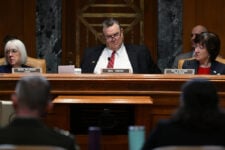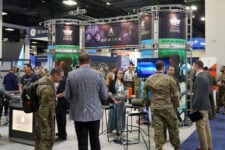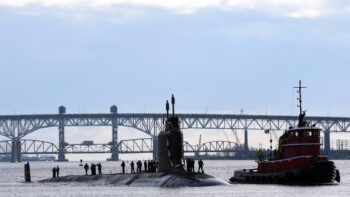 CAPITOL HILL: The House Armed Services Committee will hold an extraordinary classified briefing Thursday, open to all House members, on the state of readiness in the US military. Rep. Randy Forbes and other HASC members who pushed for the briefing hope it will help convince Speaker John Boehner and other key GOP leaders that the combined effects of the last 18 months of sequestration, the federal government shutdown, and the absence of a defense appropriations bill have had deep and worrying impact on the readiness of American’s military forces.
CAPITOL HILL: The House Armed Services Committee will hold an extraordinary classified briefing Thursday, open to all House members, on the state of readiness in the US military. Rep. Randy Forbes and other HASC members who pushed for the briefing hope it will help convince Speaker John Boehner and other key GOP leaders that the combined effects of the last 18 months of sequestration, the federal government shutdown, and the absence of a defense appropriations bill have had deep and worrying impact on the readiness of American’s military forces.
[Updated: The Government Accountability Office just released its own report on the impact of sequester so far. GAO’s take, in brief? “DOD was able to mitigate some near-term effects” in fiscal year 2013, but as the service chiefs told the Senate Armed Services Committee yesterday, their ’13 tricks won’t work in 2014, which will require much harder choices].
Now we wait for the Budget Conference Committee from the House and Senate to meet and come up with a plan by Dec. 13 to avoid the continuing run of spending crises we’ve suffered through the last few years. Few Washington insiders believe that the conference can do it, though we insiders certainly get it wrong from time to time. Forbes’ view?
“You and I know that isn’t going to happen, Forbes said.
Thursday’s classified briefing “will focus on the current state of readiness of the combatant commanders to meet their wartime missions, the services’ readiness to provide trained and ready forces, and the challenges presented by sequestration. Briefers will also be prepared to discuss recent trends in service and unit-level readiness, prioritization of mission requirements, and levels of assumed risk within major war plans as a result of recent defense cuts,” according to the email send to all House members yesterday afternoon.
“Most members of Congress just don’t know how big the cuts are to national defense,” Rep. Forbes told me this morning. “We’d like to have the leadership of the House at least to know what’s happening.”
Yesterday, all four service chiefs told the Senate Armed Services Committee they have serious concerns about Defense Secretary Chuck Hagel’s recent strategy review, questioning its assumptions that will guide creation of the next defense budget and the course of the congressionally-mandated Quadrennial Defense Review. Last month, three of the four Joint Chiefs told Forbes that they could not execute the current strategy of the United States should sequestration last another year.
Two weeks before the federal government shutdown began, Forbes, chairman of the HASC seapower and power projection forces subcommittee, asked each of the Joint Chiefs if they could execute the military’s basic Strategic Planning Guidance. It requires US forces be able to handle one enemy and to deter another. Down the line he went. Army Chief of Staff Ray Odierno: no; Chief of Naval Operations Jonathan Greenert: no; Air Force Chief of Staff Mark Welsh: no. Marine Commandant James Amos, yes, but.
http://youtu.be/jAFt1l5rS4g
To end the shutdown, Congress passed another Continuing Resolution instead of passing individual appropriations bills. That froze spending at last year’s levels. Combined with sequestration and the other actions, this means cuts of
How ready is the United States military today? “When do you remember only 4 percent of our Army brigades are ready for combat? We are on our way to the Russians and Chinese having 12 combined production lines for fighters and bombers. We’ll be down to one each. We’re heading down to 230 to 240 ships. The Chinese will deploy 73 subs to our 23. Those kinds of things ought to shake anybody up,” Forbes said this morning during our interview. While not all of those are readiness measures, they do indicate the sweep of the worrying possibilities we face over the next few years.
The questions are, how many House members will attend Thursday’s briefing and, even more important, will House leaders attend and hear something that drives them to act?
Air Force nears Wedgetail deal with Boeing after jostle over costs
“We think we can substantially improve over what Boeing offered us. I would say we will not meet in the middle,” said Air Force acquisition czar Andrew Hunter.


























